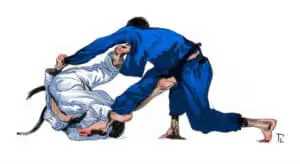It’s finally time to take your first BJJ class. You have been thinking about doing it for a while now and have decided to go for it. Now you want to know what to expect when you enter your gym for the first time.
What Happens On Your First Day Of BJJ? On your first day of BJJ at most gyms you will take part in a regular class. This usually runs for between 1-2 hours. Standard BJJ training consists of a warm up, technical practice and then concludes with sparring. If it is your first day of BJJ some gyms may offer you a 15-30min intro private lesson where they teach you the basics before letting you train in a regular class.
Training typically begins with a 15-30min warm up which consists of a mixture of jogging, calisthenics (pushups, situps), basic gymnastic movements such as cartwheels, some BJJ specific movements like hip escapes and bridges and some stretching.
Then the coach will demonstrate a series of techniques and you will partner up and perform the techniques on one another without resistance. This is known as drilling and usually lasts between 30-60mins.
After drilling it is time spar or roll. This is where you compete against your partner in mock matches. If it is your first day it is best to take it slow and try to focus on just using the techniques you learnt. Rolling usually lasts 15-30mins. After rolling training will end, some gyms get students to line up in rank order. Other schools just keep it more casual and shake each others’ hands and leave the mat.
What Should I Wear To My First BJJ Class?
If it is your first BJJ class wear a tight fitting sports t shirt and athletic shorts.You may have seen the funny uniform known as Gis people wear when training BJJ. Don’t worry you don’t have to purchase one before your first class. BJJ gyms will often have a spare Gi that you can borrow free of charge for your first class.
If they don’t have a spare Gi you can just train in your t shirt and shorts. After you have been training for a while I recommend you purchase your own Gi. If you aren’t a fan of the Gi you can train No-Gi BJJ which is the same as BJJ but instead of wearing a Gi you train in a t shirt and shorts.
How To Tie My BJJ Belt?
Tying your BJJ Belt can be a bit tricky. Don’t worry just follow this easy video below. If all else fails just ask someone to help you out. You won’t be the first or last person who needs help tying their BJJ Belt.
Hygiene For BJJ
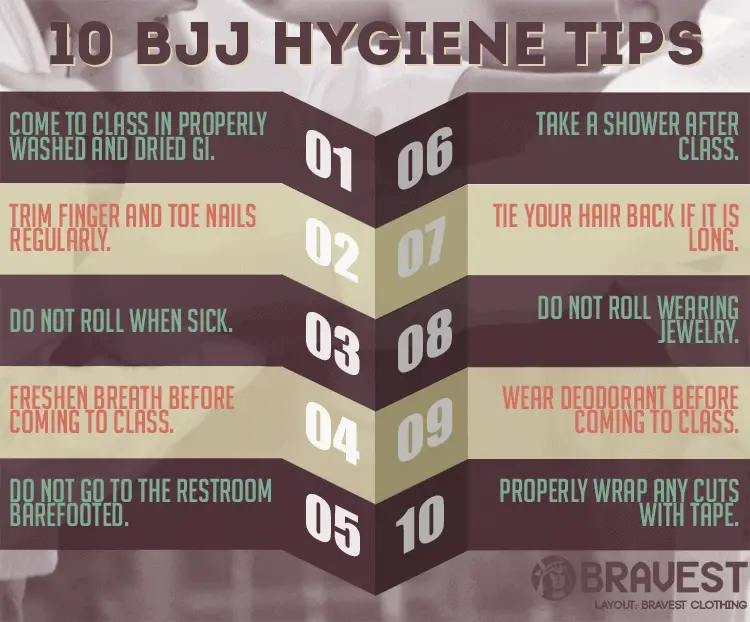
Due to the close contact nature of BJJ hygiene is very important. Before you attend your first BJJ class you should have a shower, clean your teeth, cut your nails and remove any jewellery. Nobody wants to train with someone who has bad odour.
Please ensure you shower thoroughly and wash your teeth carefully. It is also advised to put on some extra deodorant as you will be sweating a lot.
Nails need to be kept short as it is easy to scratch and cut some while training. Nails can leave nasty scratches which can become infected. Even mildly long nails can hurt your training partner so please cut them very short. Like nails, jewellery can cause nasty cuts but it can also be ripped out during training so it is best your and your partner’s sake to remove all jewellery before attending your first BJJ class.
How Do You Warm Up For BJJ?
The purpose of a warm up is to prepare your body for movements you want it to perform without taxing it. As BJJ requires flexibility it is best to start your warm up by stretching. BJJ requires hip, shoulder, ankle, neck and back mobility. It is best to focus on stretching these key areas. BJJ works the arms, back, legs and abs. To get these muscles firing some calisthenics such as push ups, sit ups and bodyweight squats can be beneficial.
BJJ requires you to perform specific movements such as bridging, inverting and hip escapes. A good warm up should incorporate these movements allowing you to practice them and preparing your body to perform them under resistance. BJJ is intense physical exercise to get your body ready. Your warm up should raise your heart rate and get you sweating but it shouldn’t be too strenuous that you become tired. If you follow these steps your body should be primed to smash your next BJJ training session.
What Is Drilling?
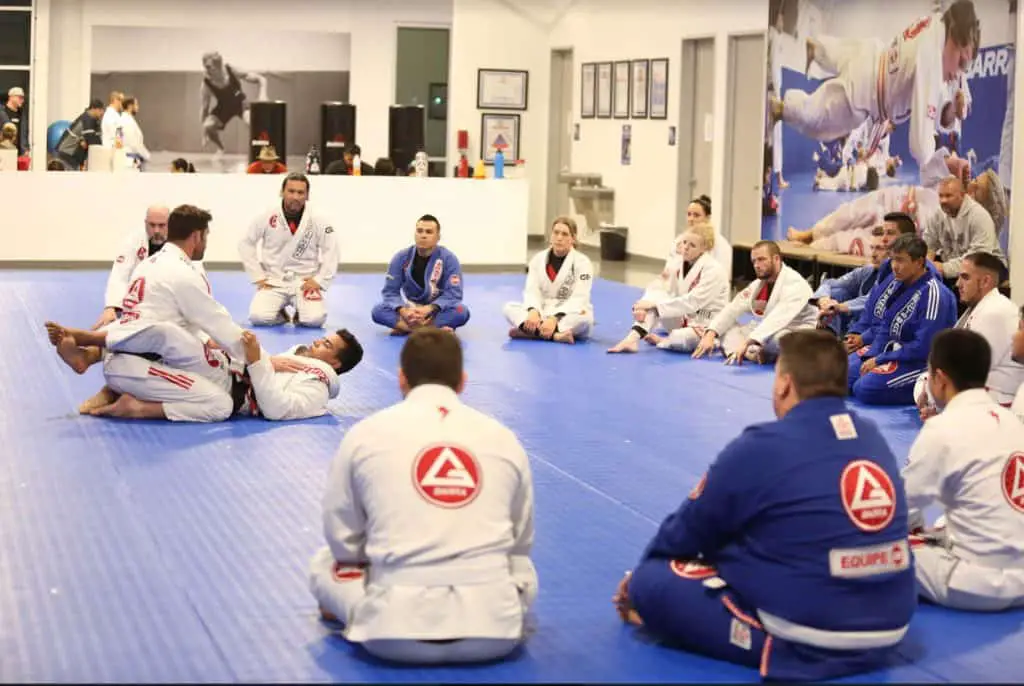
Drilling refers to practicing BJJ techniques on a compliant partner. Drilling usually takes up the majority of a BJJ training session. Your coach will usually choose a member of the class and then perform a technique on them. They will perform the technique a number of times, explain how it works and answer any questions students may have.
After that you will partner up to practice the technique you were just shown. Your coach will walk around the room helping students perform the technique correctly.
During a typical BJJ class a coach will demonstrate between 3-6 techniques. Ideally these techniques will be related to each other and could be used in a sequence. For example a takedown, into a guard pass and then finishing with a submission. If a coach is teaching random techniques with no relationship to each other it is a red flag that they may not be a great coach.
It is important to be a good partner during the drilling phase. You don’t want to resist but at the same time you don’t want to be a starfish. You need to give the correct reactions and not just flop over before your partner can perform the technique correctly. If you are unsure if you are being a good drilling partner just ask for feedback from your training partner.
What Is Rolling?

Rolling is a term used in BJJ to describe sparring. This is where you execute techniques against resistance and compete against your training partners in mock matches. The difference between rolling and competition is the goal of rolling is to practice and improve while the goal of competition is to win.
Rolling takes place at different intensity levels. Rolling that is done at less than 60% is known as flow rolling and is used to warm up or practice new techniques. Rolling that is done at a higher intensity is used to improve conditioning and prepare for competition.
Rolling is potentially dangerous. To reduce the risk of injury you should train with training partners who value your safety and use proper technique. If you are a beginner it is best to start rolling at a lower intensity until your technique and conditioning improves.
How To Tap In BJJ?
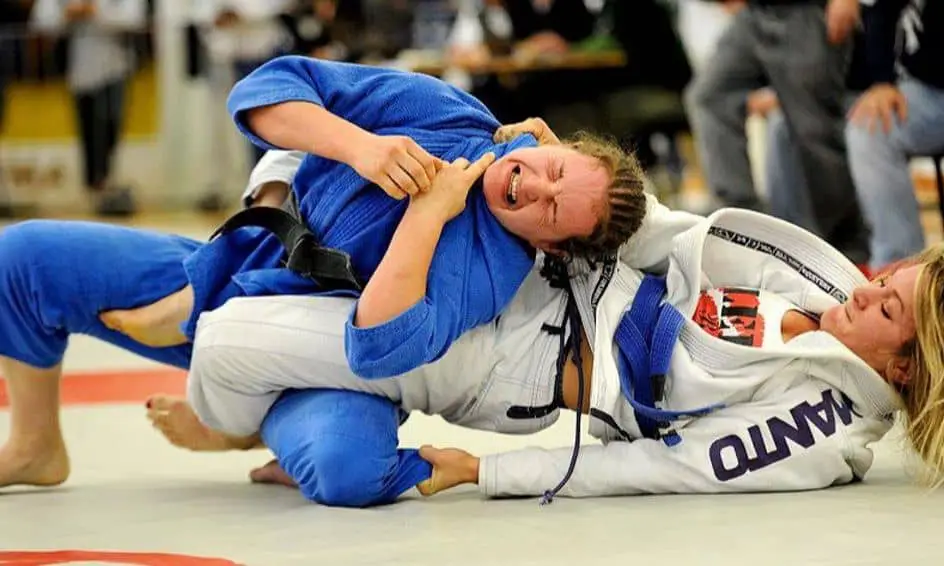
How To Tap In BJJ? To tap in BJJ you should tap anywhere on your opponent multiple times firmly to ensure they can feel it. You should also say the word tap to ensure there is no confusion over your physical tap. Sometimes you may not be able to physically tap due to your arms being trapped. This is when you should tap the mat with your feet or verbally tap.
You should tap before you feel pain and when you realise that you are unable to escape. It is best to tap too early rather than too late to avoid being injured.
If you are a beginner don’t be embarrassed to tap if you feel you are in danger or in pain. Once you understand submissions and positions you will know when you need to tap.
How To Apply A Submission In BJJ?
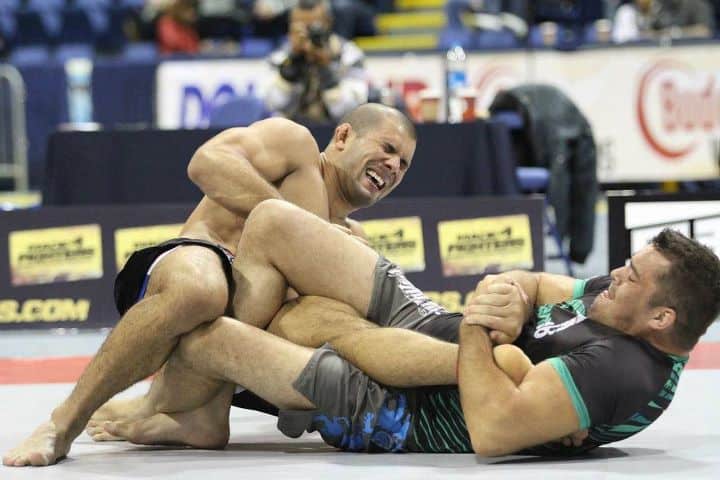
How To Apply A Submission In BJJ? A submission in BJJ should be applied slowly and carefully where you increase the pressure over time until your training partner taps. You should use correct technique. It is better to start off slowly until you are familiar with the technique.
To protect your training partner you should give them enough time to tap before injury occurs by applying the submission gradually.
You should not apply a submission explosively especially if you do not understand the technique. If a submission is clearly not working do not try to increase the pressure instead try to make technical adjustments. If it is still not working release it and move on to something else. After training you can ask your coach how to correctly apply the submission.
What Happens After First BJJ Class?
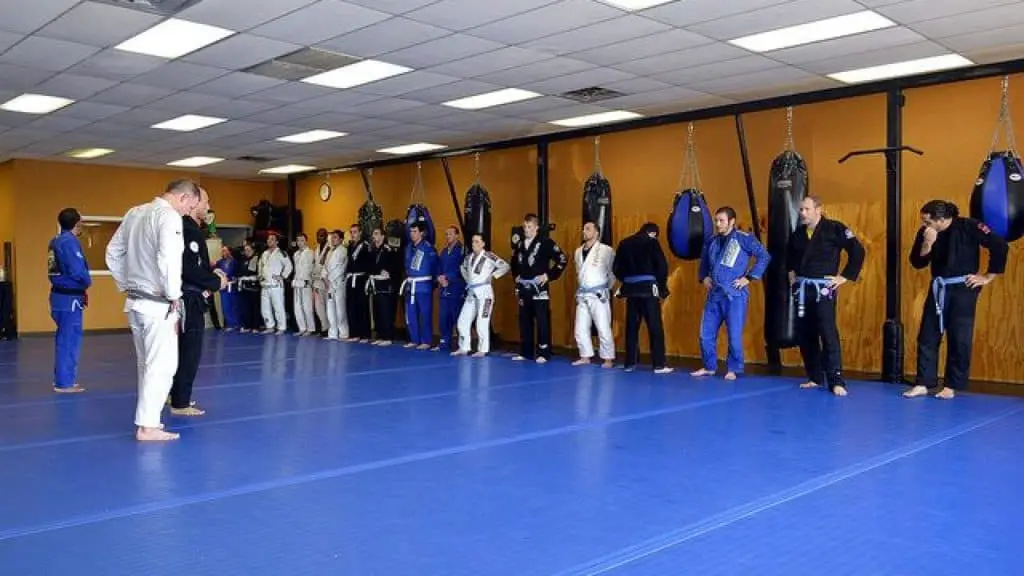
After BJJ class ends you thank your training partners and coach and then leave the mat to get changed. At some schools it is standard practice to line up in rank order. The coach will then address the class and then you will go around the room shaking hands and thanking each other.
If it is your first class make sure you line up at the end of the line. After your first class ends you can ask your coach any questions you may have and find out what memberships deals they offer. I recommend you wait before signing up and try out a few gyms before you make a decision as the post training endorphin rush can cloud your judgement.
What Techniques Are Illegal In BJJ?

What Techniques Are Illegal In BJJ? There are many techniques which are Illegal in BJJ. The International Brazilian Jiu Jitsu Federation (IBJJF) has outlawed the following techniques:
- Scissors takedowns
- Jumping to closed guard
- Spinal locks
- Scissors takedowns
- Slams
- Heel hooks
- Knee reaping – when attacking straight foot lock putting your outside foot across opponents body.
- When attacking straight foot lock turning towards the foot not under attack.
- Locks twisting the knees
- In toe hold, applying outward pressure on the food
- Suplex takedowns, where your opponent land with head or neck on the ground.
- Bending fingers backwards.
The IBJJF also considers the following to be serious fouls:
- Athlete swears at opponent, crowd the center table, table officials or referee
- Athlete exhibits hostile behavior towards an opponent, crowed or referee
- Athlete bites, pulls hair, strikes or applies pressure to the genitals or eyes, or intentionally uses a traumatic blow (such as punches, elbows, knees, head butts, kicks)
- Athlete exhibits offensive or disrespectful behavior towards an opponent or the crowd during a match or in celebrating victory.
- Athlete disrespects the competition by performing actions simulating or faking combat
Is 30 Too Old To Start BJJ?
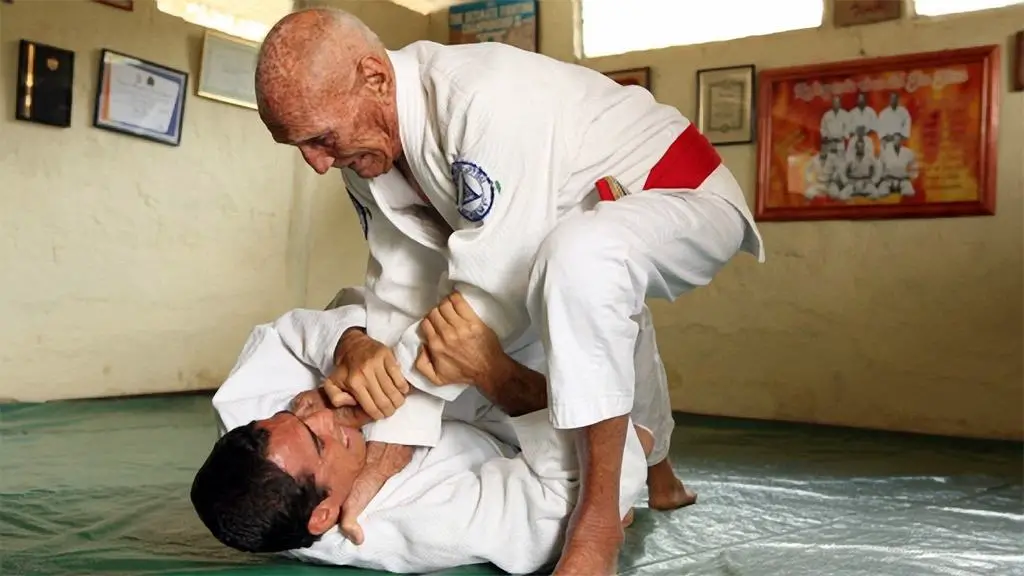
Is 30 Too Old To Start BJJ? 30 is a great age to start BJJ. If you commit to training BJJ regularly you could be a Black Belt within 7-8 years which means you would be around 37-38 Black Belt. At 37-38 you would still be close to your athletic prime while being an expert in BJJ.
At 30 you should have a good understanding of your body and appreciate the more cerebral side to BJJ. This puts you in a great position to improve quickly and enjoy BJJ.
How Often Should A Beginner Train BJJ?
Hopefully you survived your first BJJ class and now can’t wait to go again.
However now you are wondering how often should a beginner train BJJ. If you are a beginner I recommend you start by training 2-3 times a week. Training BJJ should be fun and enjoyable. By training 2-3 times a week you should be excited every time you head to training. Also by starting off training a reasonable amount you will give your body ample time to heal before your next training ensuring you feel fresh and ready to perform at your best.
A lot of people start training, become addicted, train 6 times a week only to burn out and quit within 6 months.
BJJ is a marathon not a sprint. You can not become a Black Belt in 6 months but you definitely can burnout or injure yourself through overtraining. I recommend you start off going 2-3 times a week and see how your mind and body feel and then you can increase or decrease your training depending on how you feel.
BJJ is a great sport. I hope after reading this guide you will be more comfortable about attending your first BJJ class. Just remember everyone has felt nervous and awkward. If you don’t know what to do just take it slow and ask for help. If you follow this guide your first BJJ class will be a great success.
